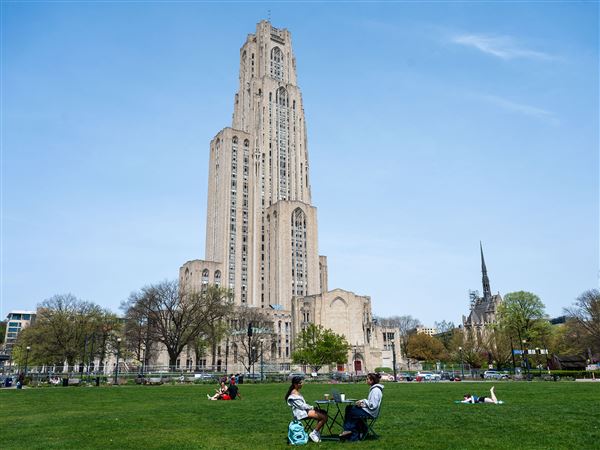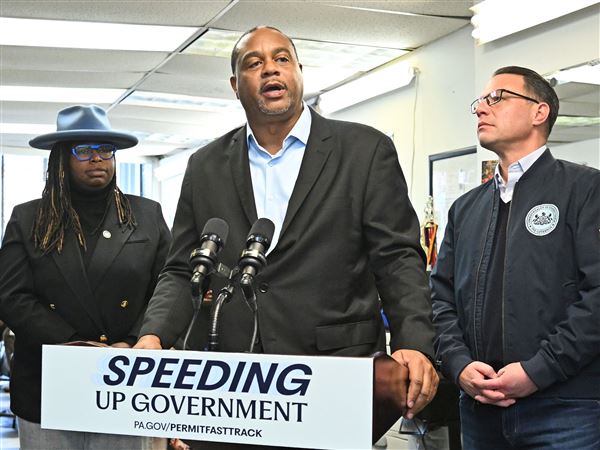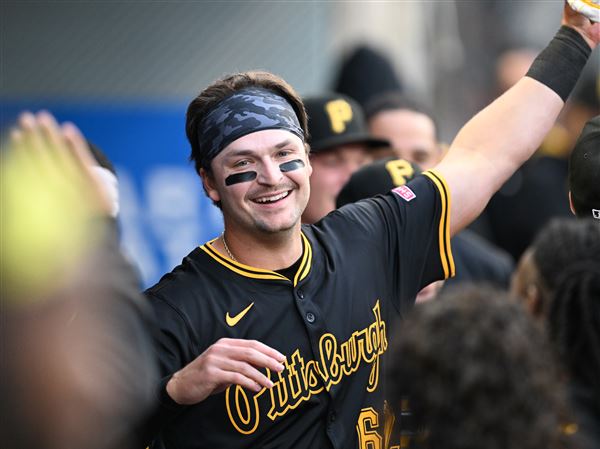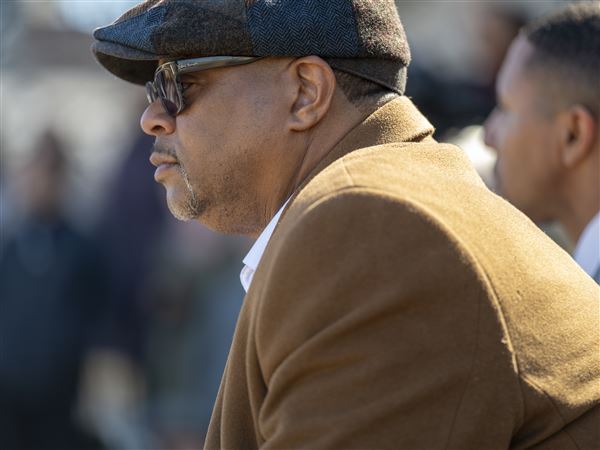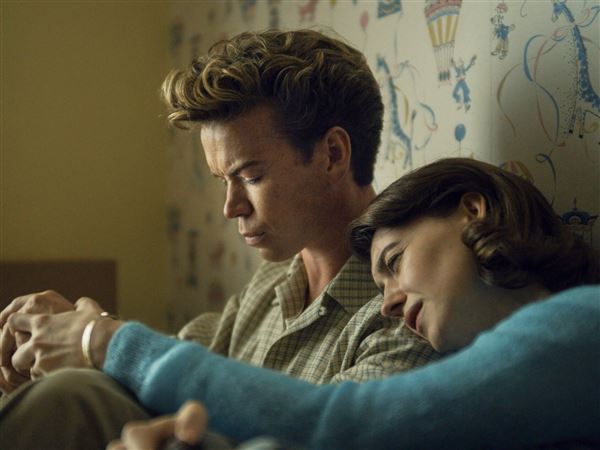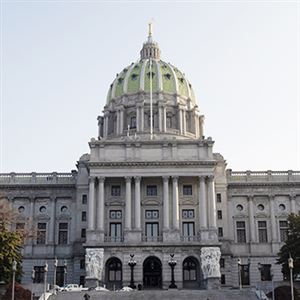MATANZAS, Cuba — We would have just a few days in this breezy city by the bay.
We were here, on the northwestern shore of this Caribbean country, as part of a group of 10 American storytellers, most from Pittsburgh, to uncover untold stories about Afro-Cuban culture.
To do this, there was, perhaps, no better place to be than Matanzas. After all, the city — the birthplace of rumba — is reputed to be the epicenter of Afro-Cuban culture. It’s also Pittsburgh’s sister city because of its bridges, rivers and working-class roots. So, having broken away from the group, we were eager to pack in the history, visit the sites and talk to the people who could help us understand what it means to be Afro-Cuban. We dove in with a list of must-see places. Finding these spots, however, was more challenging than we thought.
With a few suggestions and hand waves from locals about turning right or left, we walked up and down the bustling streets of Matanzas, past government buildings and shops, and through crowds at a corner bus stop before ending up where we had begun — in the center of the city.
Tired and seeking a place to pause, we found ourselves in Parque Libertad (Liberty Park), a wide, peaceful plaza in the middle of Matanzas.
We were drawn to the towering bronze statue in front of us. We recognized the face that belonged to Jose Marti, the Cuban revolutionary and independence leader. Two palm trees flanked his stately statue. But what drew us closer was the bronze form jutting out from its granite base.
A young woman, bare-chested, arms outstretched, clutched a broken chain. We were curious about her connection to Matanzas. Was she a link to Matanzas’ Afro-Cuban culture?
As we pondered these connections, Jimmy walked into our lives. A Matanzas native, he began to share, in English, the young woman’s story. Her statue pays homage to the young sugar plantation worker who rebelled against the Spanish, and was part of the spark that set in motion Cuba’s push for independence from Spain.
It’s a fascinating story. And, when Jimmy finished telling it, he kept talking and unpacking more history. We said thank you and tried to politely dismiss him, believing he was hustling to make a quick buck.

As shops close and evening falls, this mother and son rest on a curb on the edge of the Parque Libertad. B. Denise Hawkins
A ‘Soul Train’ connection
But there was something about Jimmy that was familiar and endearing. He showed up that afternoon wearing a bright smile and a nearly new black and orange Baltimore Orioles cap. That was enough for him to win the heart of one of us — B. Denise — a Baltimore native who grew up just steps from the team’s baseball stadium on 33rd Street.
Then Jimmy asked a question that froze us in our tracks. “Hey, do you guys know Don Cornelius? “Soul Train”?”
Of course, we do. We both grew up dancing along with the music of the TV show that started in the 1970s, on which host and creator Cornelius signed off weekly with his catchphrase, “We wish you love, peace, and soul.” That Jimmy knows “Soul Train,” too, fascinated us. “Come on, Jimmy,” we said, “Tell us more.”
This stranger captivated us with his smooth, confident delivery of Cuban history. He tickled us with tunes and trivia from the soul music vault in his head — and heart. In his memories of James Brown, Marvin Gaye and Aretha Franklin we heard an invitation that opened the door to an unexpected cross-cultural exchange. It linked us to the wave of African-Americans who came to Cuba before us and who have engaged with the Cuban people since the 19th century over common elements of African history and culture.
In 1868, Blacks and Cubans connected over anti-slavery issues and African-Americans, led by Henry Highland Garnet, an abolitionist preacher who lived in Pittsburgh, supported the Cuban War of Independence.
Marian Anderson, Dizzy Gillespie and other legendary Black musicians played in Cuba in the ’30s, ’40s, and ’50s, helping to fuse Afro-Cuban rhythms and jazz. From their island nation, Cuban writers wrote about lynching, Jim Crow and racial oppression in the United States.
When the Black American poet Langston Hughes visited Cuba in the early 1930s, he went in search of the “heartbeat and songbeat of Africa.” He heard the drums and saw the sun-kissed Cubans dance the rumba, which melds Spanish and African rhythms. Hughes’ visit inspired local poets and artists and writers to celebrate their African identity and their cultural connections to Africans around the globe.
The term “Afro-Cuban” refers to Cubans with West African ancestry. About 800,000 enslaved Africans were imported to Cuba during the Atlantic Slave Trade. That’s more than double the number imported into the United States. For decades, leading Afro-Cuban intellectuals and writers like Esteban Morales Dominguez, who was born in Matanzas; and Tomas Fernandez Robaina, a scholar based in Havana, have struggled to give voice to Afro-Cuban consciousness.

Visitors to Castillo de San Severino, built in 1735, can look out beyond the fort’s concrete and stone walls and turrets to the port of Matanzas. B. Denise Hawkins
Jimmy’s neighborhood
One of the first places Jimmy took us was to a museum, about three blocks from Parque Libertad. The small exhibit there, “Nuestra Madre Africa (Our Mother Africa),” showcased masks from Benin, Nigeria and the Congo.
Next we walked down Matanzas’ narrow, tatty streets to Jimmy’s neighborhood.
He lived in Barrio La Marina, a neighborhood near the Bay of Matanzas. It is a place where butchers walk their pigs through the streets, domino players huddle, neighbors break out in spontaneous dance celebrations and friends gather for community soup, everyone contributes something to the shared pot.
It is a place that moves to the rhythm of the rumba and the baka drums. No more so than because of the music and dance classes taught in La Marina at the Cultural Community Center Nelson Barrera. The director there, Regla Gonzalez Miro, desires to link the residents, especially its children and youth, to their African roots. One afternoon in the courtyard of Ms. Miro’s center, she grew nostalgic for what her community used to be. When she grew up on these streets, La Marina was a different place — safer, and not known for drugs and prostitution. She also longs for the clean, unpolluted waterways that used to teem with fish. “Now the fish are few,” said Ms. Miro, who’s committed to changing lives through the arts and history.
Meeting the locals
That first day Jimmy worked hard for his money, giving us a two-hour walking tour. When we offered him $40 he thanked us and said, “My family will be able to eat tonight.”
Before he disappeared into the gray shadows of dusk, he grinned and said, “See you tomorrow.”
And he was there, in that same park at 9 the next morning, ready to offer us a closer look at present-day Matanzas and its slave past.
Jimmy scurried to a street corner to secure us a taxi — a mint-yellow, 1956 Chevrolet that would ferry us around for the day.
We traveled to Catedral de San Carlos Borromeo (Cathedral of St. Charles Borromeo), one of the oldest Catholic churches in Matanzas. We visited Castillo de San Severino (San Severino Castle). The fort, known as the Museum of the Slave Route, built in 1735, became the offloading point when enslaved Africans were brought to the Caribbean island in the 1800s. San Severino became a prison before it was shuttered in 1970. Today it is a museum that showcases the remnants of slavery — including shackles and holding cells that bound Africans before they were sent to Cuban sugar plantations. Also on display are the colorful fashions, jewelry, and artifacts that reflect the roots of Afro-Cubans and the fusion of cultures and traditions.

Regla González Miró, director of the Cultural Community Center Nelson Barrera in La Marina, greets visitors and shares the work and mission of the center. B. Denise Hawkins
Jimmy then took us to the highest point in Matanzas and we looked out over lush, verdant fields. Next, we headed to Cuevas de Bellamar (Bellamar Caverns), where visitors can traverse nearly two miles of humid, dark underground. Legend is the caves were discovered by a slave who lost a working tool in a hole and, in digging to recover it, came upon the caverns.
We met the Afro-Cuban pizza shop owner. The young female entrepreneur had received money from her mother, who was living in Spain, and opened the shop in a space that connected to her apartment.
We met the 33-year-old bicycle taxi man. He quit his job as restaurant worker because pedaling tourists and locals offered him a better income to help his family.
We met the vegetable and fruit peddler. His cart brims with carrots and potatoes, he hustles every day while also studying to be a bartender to find work in a local hotel.
It was Jimmy who introduced us to the dreadlocked musician, an activist who works in the local community to raise awareness of African culture in Cuba.
For a break, Jimmy took us to a restaurant by the river, where they served beans and rice that reminded us of our grandmothers’ kitchens and cooking.
This is Jimmy’s world.
Jose Antonio “Jimmy” Jimenez, who says he once taught history before falling on hard times, knows the people of Matanzas and they know and respect him. Most greet him with hugs. He is careful with the visitors who are in his charge, cautioning us to be discreet — not to gather our oral histories too openly, or for too long for fear of government representatives who may be watching.
“C’mon,” said Jimmy, when we tarry too long, or try to take just one more photograph, or ask one more question. “Time to go,” he beckoned.
One evening, after a day of touring, and when the soul singing and finger snapping slowed, Jimmy whispered his wish: “Can you spare any soap and toothpaste?”
We rummaged through our luggage and bagged up toiletries, our spare change, and clothing. We wish we had more. Jimmy cried as he accepted our gifts.
But we were not sad for long. With a bag of gifts tucked under his arm, Jimmy took us back to his music vault. Before we knew it, he dropped the name of the “Godfather of Soul” and we were back on board the Soul Train, smiling, bopping and singing.
Ervin Dyer is a former reporter with the Pittsburgh Post-Gazette and a writer/editor with the University of Pittsburgh. He can be reached at edyer@pitt.edu; B. Denise Hawkins is an independent journalist based in Washington, D.C. She can be reached on Twitter @BDeniseWrites .
First Published: May 21, 2017, 4:00 a.m.
